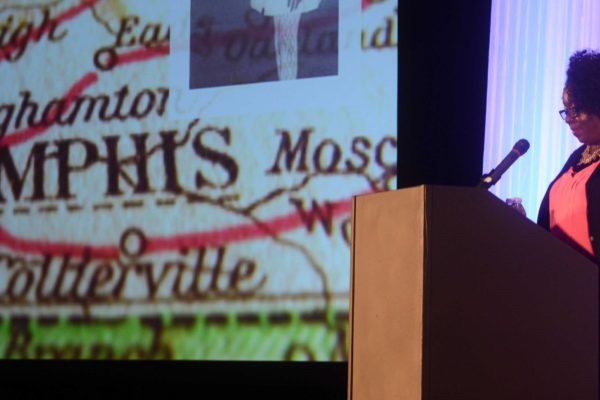Kimberly Bryant’s pre-teen daughter was a big gamer and loved computer camp — but told her mom that the boys got more attention than the girls. Kai was the only black girl, and one of few girls, at an elite Stanford University summer program in 2011.
“That was a wake-up call for me 5 years ago,” Bryant told a room full of 700 higher education web professionals. “I wanted to create a better, a more ideal, and perhaps an easier path for her and girls like her.”
Bryant founded Black Girls Code to offer girls of color ages 7 to 17 opportunities to learn in-demand skills in technology and computer programming at a time when they are naturally thinking about what they want to be when they grow up.
Bryant never saw an engineer while growing up in inner-city Memphis, but was a gifted student who took multiple Advanced Placement courses in high school. She became one of few black girls majoring in computer science at Vanderbilt University in the 1980s and remembers repeatedly feeling invisible. It started the first day when a professor ignored her when she was the only one who raised her hand in answer to his question.
Yet that era — the late 1980s — was a peak for the ratio of women receiving degrees in computer science, when women totaled 30%. Since then, the ratio has plummeted to about 18%, while the percentages of women enrolled in physical science, medicine, and law have grown. The statistics by race are further skewed. Black women make up only 3% of computer science degrees, and Latina and native American women comprise fewer than 1%.
Smashing the dominant narrative of the “white male geek” will benefit everyone, says Bryant: “Technology can’t solve all things. But technology can be a catalyst for transformative social change. If we empower our girls, who are natural change agents, to use technology as a creative tool, it will lead to innovative solutions to a variety of social issues.”
Bryant told of a 14-year-old Black Girls Code participant who was intent on creating an app to address domestic violence. Bryant’s own daughter co-created an app addressing food deserts in Oakland, California.
The workforce needs more people with computing expertise, Bryant pointed out. The federal Department of Labor estimates there will be 1.4 million computing-related jobs by 2020, but the current rate of graduates can only fill 30% of them.
More than half of middle school girls are interested in the field, but by high school fewer than 2% plan to major in computer science.
The goal of Black Girls Code: Teach 1 million girls to code by 2040. So far the program has reached more than 6,000 students through classes in robotics, game development, web design, mobile app development, and emerging fields such as virtual reality. The skills boost their confidence and give them ways to address problems they see. Next, Black Girls Code seeks a scalable model that other after-school programs can use.
“The true issue we’re solving for is an opportunity deficit and not a talent deficit,” said Bryant.
Openness and collaboration are two key values of the HighEdWeb Association. The organization gave Bryant a financial donation for Black Girls Code.
For more: http://www.blackgirlscode.com
Follow her on Twitter: @6gems
Photo credit: Mark H. Anbinder

